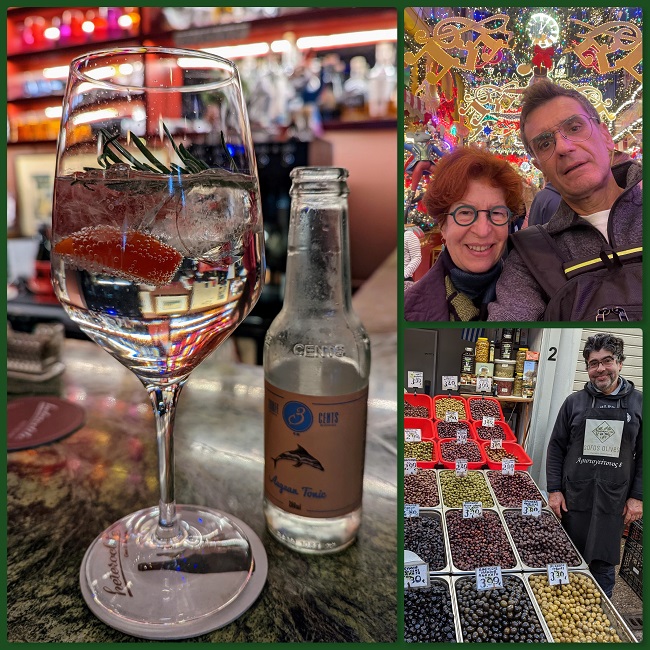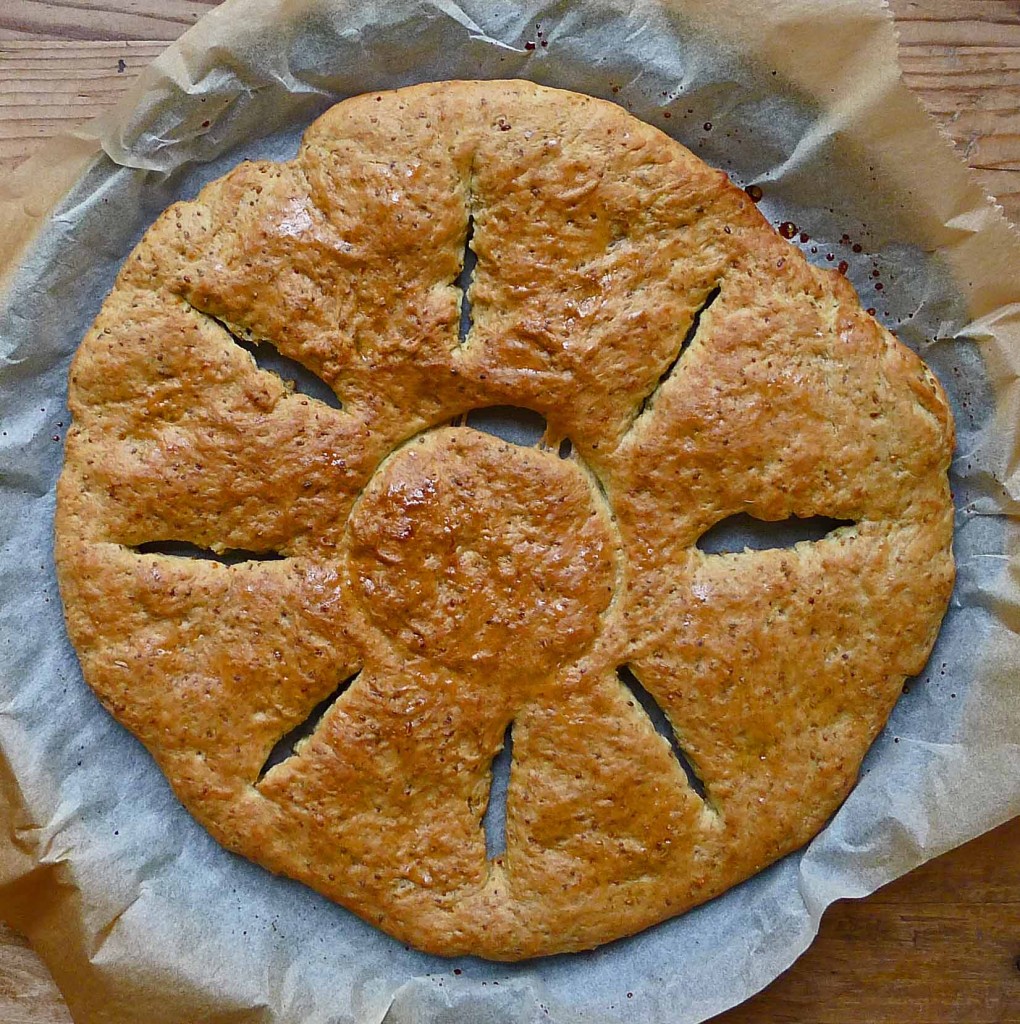All out festive, with lights, wonderful exhibitions and museums, and of course terrific shopping and restaurants, downtown Athens is simply enticing…

Leaving Kea and our garden, Costas and I spent a few days last week pretending to be tourists in the festive city. We had lovely drinks at the much talked-about, charming Heteroklito bar, and were amazed to see streets at the busy Psiri area so heavily decorated… At the always vibrant Central Market I visited Periklis Petridis’ incredible olive store ( 17 Aristogitonos str. –no website) where I tasted and bought incredible freshly cured, delicious olives from all over Greece. His slightly spicy olives from Volos were a revelation!
I arrived in the city a few days before Costas to see my best friend Maxine from New York. She visited her doughter, the talented Zoe Mylonas, and my old friend Alexandros, her ex-husband, whom we admired at The Long Day’s Journey Into Night . With Maxine we had a lovely Japanese dinner at Gaku, Syntagma and I especially loved their crunchy Seaweed Salad. All around downtown Athens the most talked-about restaurants are Asian, or Asian-inspired, and certainly the most interesting and famous is Nolan, where we had a fabulous lunch the minute Costas set foot in Athens. The adjascent Sweet Nolan was a temptation I could hardly resist, although I am not a particularely avid dessert eater…

But once more, as always, we enjoyed both the food and the atmosphere at ERGON Market, the Thessaloniki implant that a few years back took Athens by storm. There is no chance one can get a table without a reservation either for lunch or dinner these days, but I managed to sneak in and have lunch at the bar a few times. Costas and I loved our long leisurely lunch at Ergon with our friend Seth Rosenbaum who just flew in from Nicosia, Cyprus, for a few hours just to meet as!
* * *
We started our cultural stroll of the city by visiting the incredible ΑΦΗ exhibit at the Benaki Pireos, and were amazed by the work of the talented old friends, whose work I always admired, photographed, and first wrote about in Tachidromos magazine in the early 80ies.

I was particularely moved to see in the catalogue’s opening the old photo I had taken then.

The very talented Marios Voutsinas, another very old friend, amazed me once more with his new studio and exhibition space at Psiri. His new collection of jewellery is mostly created using various antique pieces his late father, the famous theater director Andreas Voutsinas, had collected over the years. These tiny spoons are one fabulous example.

We loved the work of Photis Kontoglou at the Goulandris museum, which included various other well-known artists he has influenced.

At the main Benaki building, in Kolonaki, Yannis Moralis in Private is a small, fascinating exhibit. It includes among some beautiful paintings of his family, his whole studio, as well as childhood sketches, and the designs he had done for various buildings, the theater, and fabrics.
Read More














